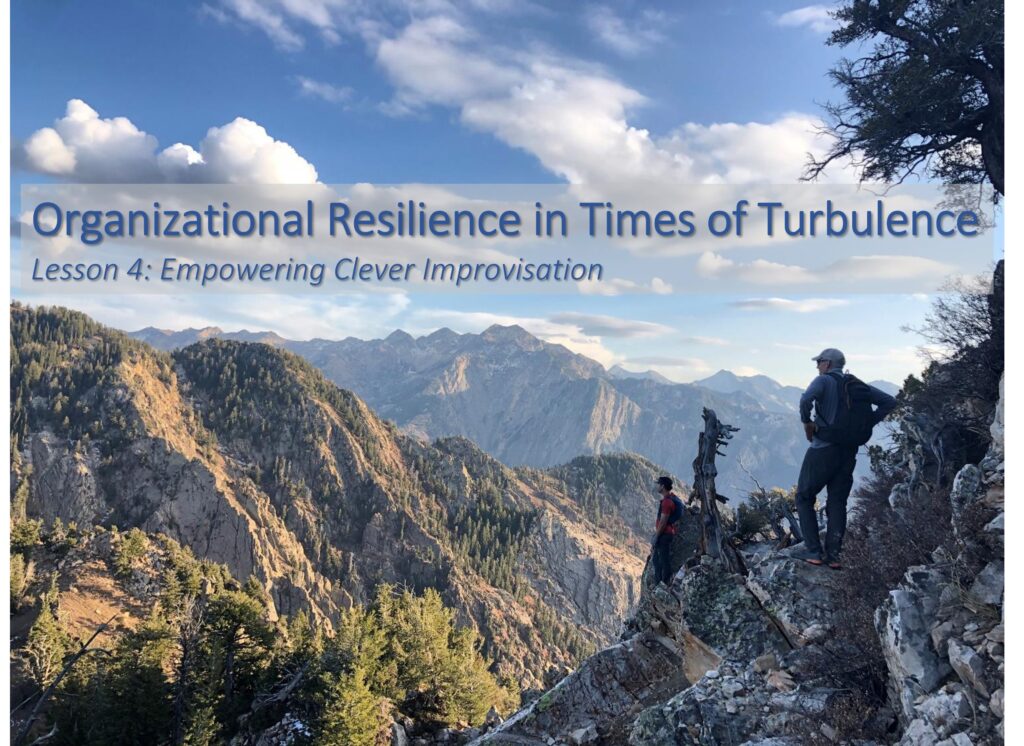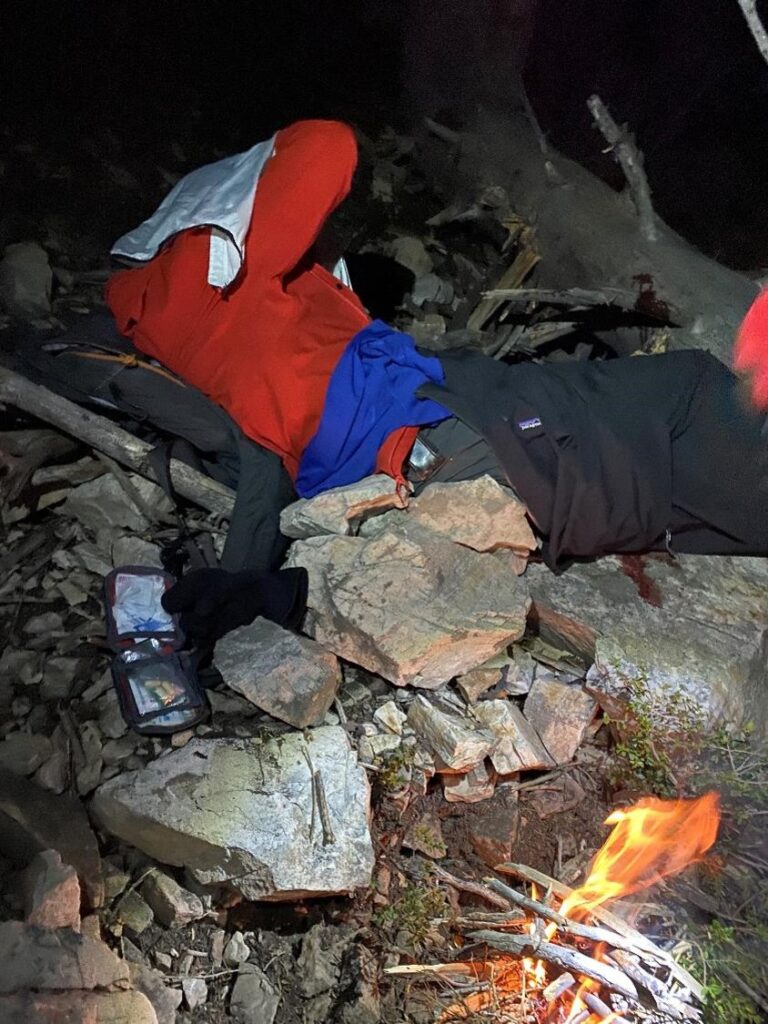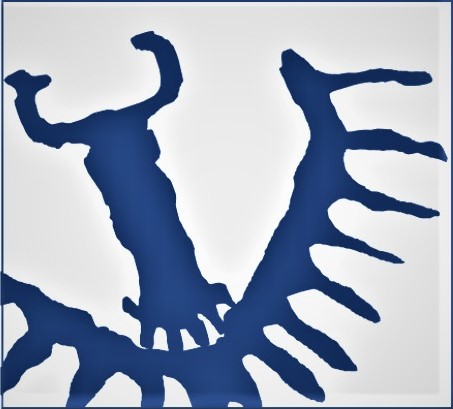This is the fourth of five posts highlighting lessons learned from a hiking accident on November 3, 2020. This week’s lesson: Empowering Clever Improvisation

The Search and Rescue dispatcher told us it would take about two hours for the helicopter rescue team to arrive. Although dispatchers called back to check in regularly and provide updates, it was up to us to make the best of the situation. But I’d started to go into shock and was trembling uncontrollably.
My friends made a quick assessment of our resources. We had our cell phones, our headlamps, extra layers of clothing and shells, plenty of water and snacks, a lighter, and a small first aid kit. But we were running out of time.
Getting Creative
My friends jumped into action. The first order of business was to stop the bleeding from the large gash on my leg. Unfortunately, they found that the first aid kit only had small band-aides, no gauze patches, and a small roll of surgical tape. So they used one of my lightweight gloves as a makeshift compression patch securing it to my leg with the surgical tape. Thankfully, it worked well enough to control the bleeding for a while.
Then, my friends wrapped me up in the extra shells we brought with us. One friend tried to support my back with some rocks to make me more comfortable. Unfortunately, it hurt more to have the rocks there, so he pulled them away. He also gave me some water from my Camelbak backpack (which had miraculously stayed on even though one of the shoulder straps was completely torn off). Then he tried to feed me a few bites of a protein bar. But, because I’d cracked my cheekbone, I wasn’t able to chew very well, so we abandoned that strategy too.
Holding On
The extra layers helped a little, but my trembling continued. Wisely, my friends decided to build a small fire on the rocks below me. They found some sticks and a piece of paper for kindling. After several failed attempts with the lighter, they were finally successful. The warmth from the fire was a welcome relief that helped me begin to control the trembling.

I stayed in that position, lying on the rocks with my hands on my head, for what seemed like an eternity. There were times I just wanted to go to sleep, but I resisted. Until finally we heard the distant sounds of an approaching helicopter.
The Lesson: Resilient Organizations Empower Clever Improvisation
I recall a conversation I had with a successful business executive many years ago. He said the most distinguishing characteristic of a successful organization was their ability to be more clever than their competition. Google Dictionary defines Cleverness as “quick to understand, learn, and devise or apply ideas.” I think this is one of the most appropriate ways I could describe what a resilient organization does in times of turbulence.
Additionally, improvisation is defined as “the ability to create or produce something from whatever is at hand.” As organizations and teams face new and unexpected circumstances, leaders can increase resilience by fostering clever improvisation. In other words: to understand, learn and apply new ideas utilizing whatever is available to them, to transform their group identity over and over. Leaders can increase clever improvisation by applying the following 4 principles.
#1 Empower Teams to Be More Autonomous
Military leaders have learned that ambiguous and uncertain conditions in the field demand that teams on the ground have greater autonomy. When commanders keep decision-making authority far from the action, teams on the battlefield are less agile.
We have seen this play out in the past few weeks in the tragic invasion of Ukraine. Russian military leaders have, amazingly, failed to overwhelm the much smaller Ukrainian defenses. One of the primary reasons expert observers give for Russia’s failure is the lack of empowerment on the battlefield. Analysts describe the Russian force as “…young, inexperienced conscripted soldiers who have not been empowered to make on-the-spot decisions, and a noncommissioned officer corps that isn’t allowed to make decisions either. Russia’s military leadership, … is far too centralized” (NYT, March 7, 2022 – As Russia’s Military Stumbles Its Adversaries Take Note)

As a rule, in times of turbulence, leaders should push decision-making down in the organization as much as possible.
#2 Train Teams to be More Capable
The psychologist Mihaly Csikszentmihalyi coined the term “flow” when someone reaches a state of intense focus and, often, peak performance. Among other factors, a person achieves flow when their skill is equal to or slightly below the challenge of a task at hand. If the person is too skilled for the task, they may feel bored and disengaged. However, if they are completely unqualified for the task, they may feel frustrated and overwhelmed. But when an individual’s skills are balanced with the challenge, they tend to rise to the occasion.
My wife, who has taught alpine skiing for over 30 years, has often said that the best way to get better at skiing is to:
- First, receive training from a qualified ski instructor (of course). Becaues, they can teach you proper form and give you the skills and understanding you need to advance and avoid common erorrs.
- Then, ski with people who are better than you! Let them push you enough to get you out of your comfort zone. This combination of increasing skills and challenges is the essence of growth.

Leaders should take the time to build and strengthen capabilities so that when the environment demands it, their teams can rise to the tasks at hand. I’m very thankful my friends and the Search and Rescue team were experienced and well trained for what they did to respond to uncertain conditions that fateful night.
#3 Invest In Sufficient Resources
All tasks and clever improvisations in an organization require resources. Time, information, tools, equipment, and financial backing are just a few examples. But how many resources are sufficient is the question. What many leaders intuitively know is that we as humans have nearly boundless ingenuity and creativity. Therefore, leaders often invest as little as possible and encourage their teams to “do more with less” rather than providing sufficient resources.
I believe leaders should avoid unnecessarily hamstringing their teams (usually in the name of efficiency). Instead, they need to look for opportunities to provide more resources for their teams rather than less. Of course, there are always constraints. But, I fear the default setting for most leaders is to cut resources unreasonably and expect teams to make do when a modest investment in better tools, systems, or processes could go a long way.

On the mountain that night, the simple fact that I brought my first aid kit made it that much easier for my friends to stop the bleeding on my leg. Could they have made something else work? I’m sure they would have; since they already improvised by using one of my gloves as a gauze. But, because we had the surgical tape from the kit, it was that much easier for them to meet the challenge and move on to other issues.
#4 Encourage Smart Risks and Learn from Intelligent Failures
Often, leaders unwittingly shut down innovation and improvisation in their organizations by only rewarding success. This sends the message to their teams that to be rewarded, it’s better to be conservative. But leaders should know that it’s in the trying of new things, many of which don’t work out, when clever improvisation shows up most!
Harvard professor Amy Edmondson speaks of the importance of learning from failures:
“In short, exceptional organizations are those that go beyond detecting and analyzing failures and try to generate intelligent ones for the express purpose of learning and innovating. It’s not that managers in these organizations enjoy failure. But they recognize it as a necessary by-product of experimentation.” (HBR, April 2011, Strategies for Learning from Failure)
I think about my friends trying to help me by propping up my back with rocks or feeding me a protein bar, neither of which helped my situation. But they kept trying! And the fire they built was precisely what I needed. Interestingly, my friends were hesitant to build a fire. Only a few weeks earlier, there’d been a wildfire burning on that exact ridgeline. If they’d let their earlier failures and the fear of starting another wildfire stop them, there’s a chance I could have suffered even more serious consequences from shock. Thankfully, they assessed the risk, weighed the potential benefits, and went for it.
Trusting Your Teams
Leaders of resilient organizations trust their people because they’ve spent sufficient time and energy on the first three principles:
- They have a deep sense of purpose or identity (see Lesson #1).
- They live in reality (see Lesson #2).
- And they have new, clear, compelling objectives (see Lesson #3).
Additionally, they give their people every advantage to cleverly improvise through autonomy, training, resources, and freedom to take risks.
Most leaders I know would love to trust their teams more, especially when things start to go south. With a little focus on these principles, team members can and will rise to the occasion!
Next Week – The Final Lesson: E Pluribus Unum – Out of Many, One… Very Thankful Hiker
If you’re interested in learning more about building more resilient teams and leaders, or Ferron Creek consulting, please contact me at stuart.larson@ferroncreek.com. We’d love to see what we can do for your organization!

Comments are closed